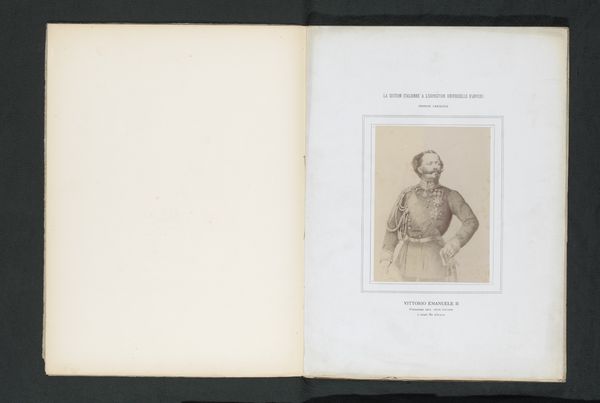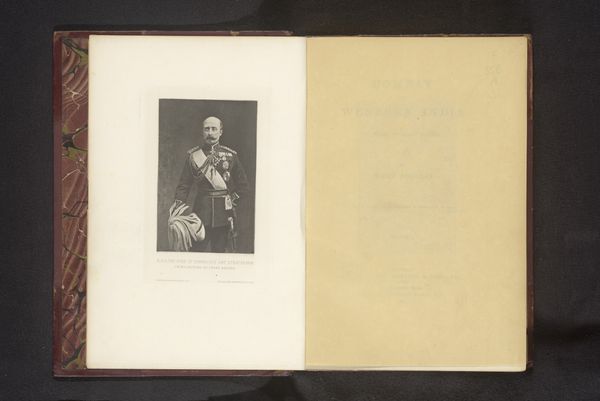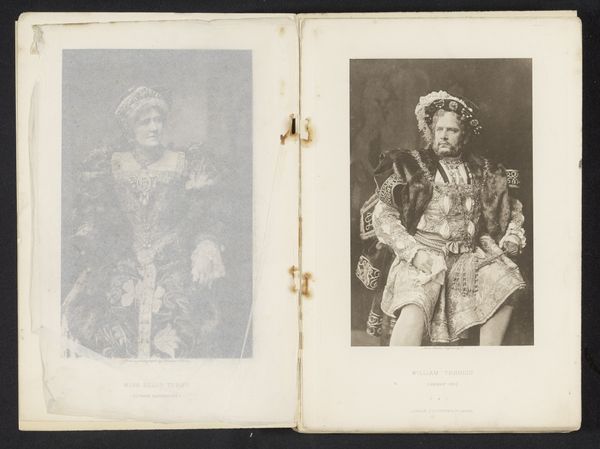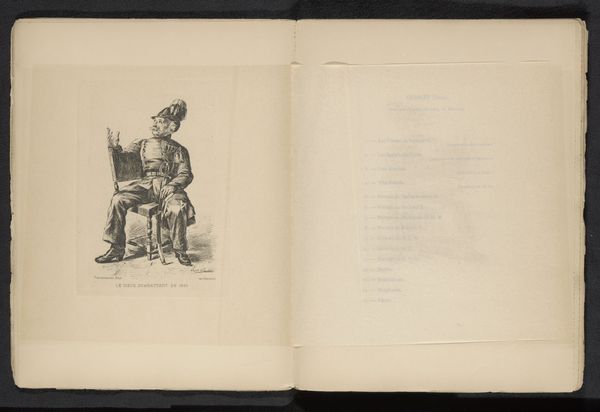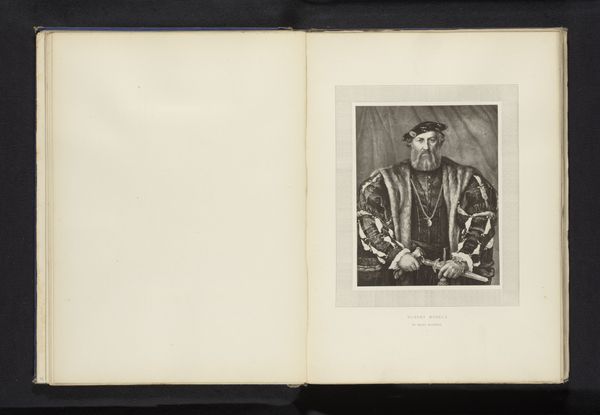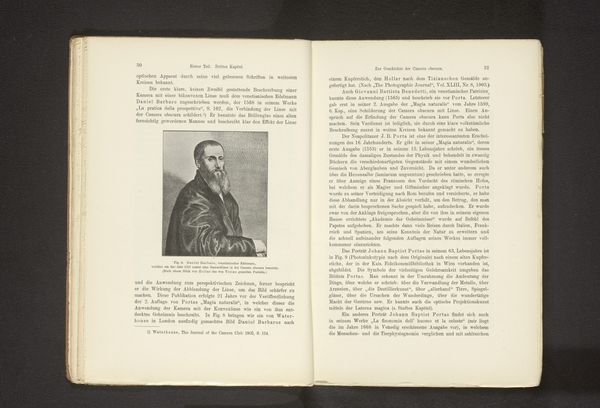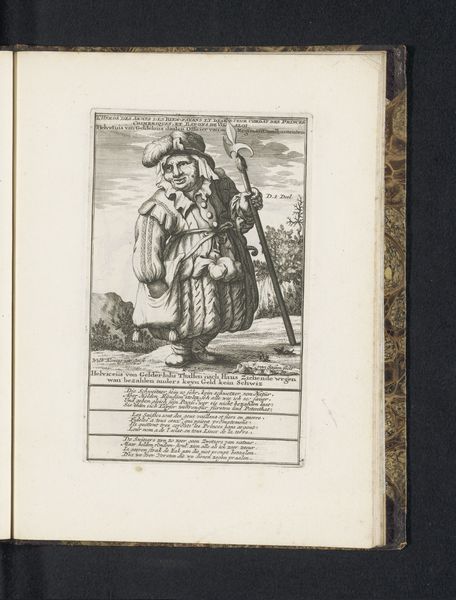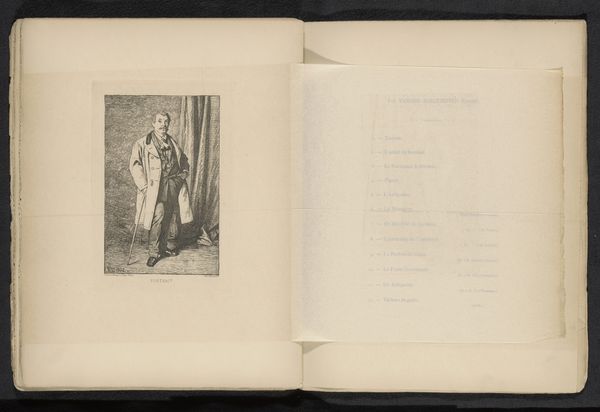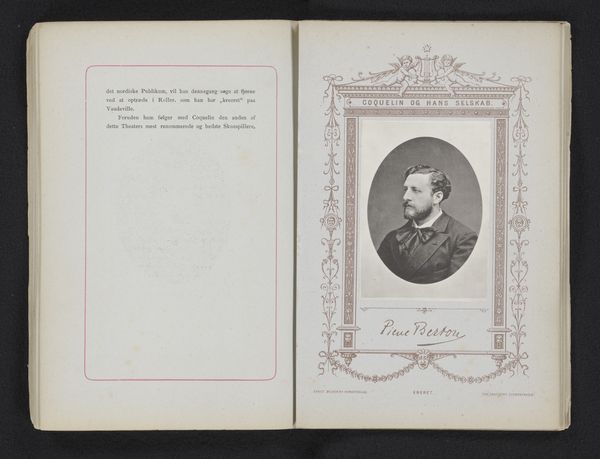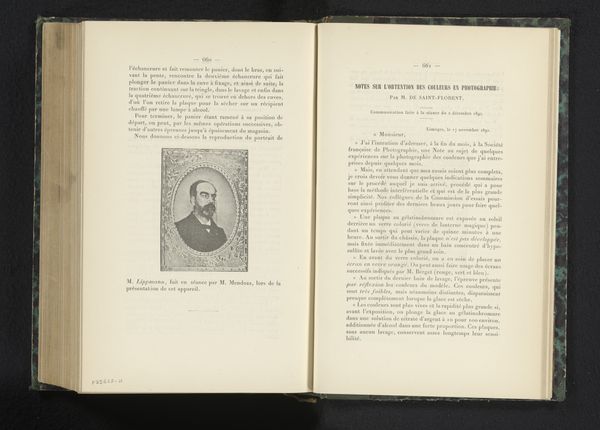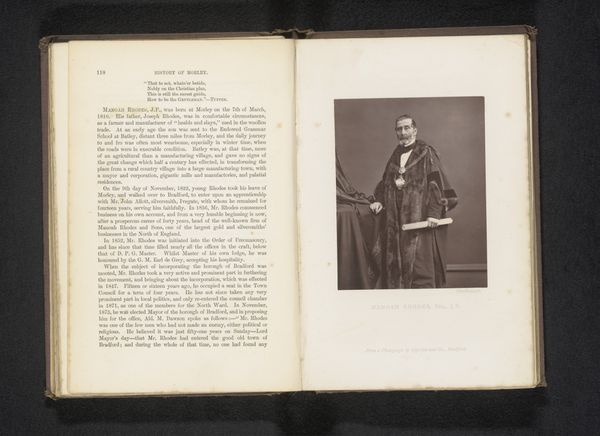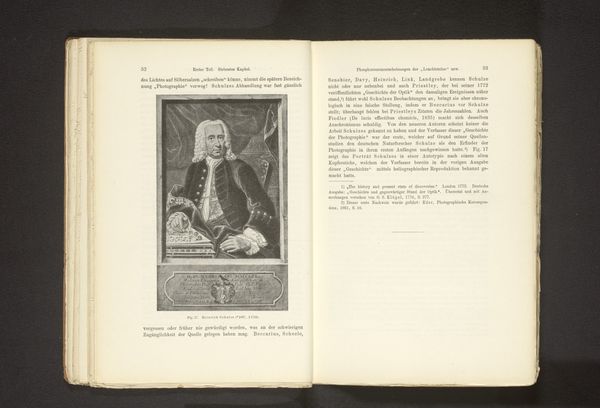
photography, gelatin-silver-print
#
portrait
#
photography
#
gelatin-silver-print
Dimensions: height 263 mm, width 195 mm
Copyright: Rijks Museum: Open Domain
Editor: Here we have a gelatin-silver print titled "Portrait of an Unknown Scottish Man," taken before 1892 by William Crooke. It has quite a stoic presence; what strikes you about this portrait? Curator: I see a powerful assertion of identity through symbols. The tartan, the feathered bonnet, the very direct gaze—they speak to a cultural memory, a visual shorthand for Scottish identity in this period. But is it celebratory, or is there a subtle tension in the formality? What emotions does the image evoke? Editor: It does seem posed, almost defiant. There’s pride, but also perhaps a need to assert that pride. Why do you think those specific symbols of identity were chosen? Curator: Each element carries weight. The tartan is not merely fabric; it represents clan affiliation, history woven into thread. The bonnet signifies military status, the feather a mark of distinction. Together, they perform a potent visual language instantly readable by contemporaries. Photography here acts as a preserver of identity. It asks to contemplate what elements endure beyond this moment. Editor: So it's not just a portrait of a man, but a portrait of an idea? Curator: Precisely. Consider how photography was being used at the time, often to document or classify people. This portrait uses those tools, but to proclaim, not to categorize. What might it mean to see this image today, removed from its original context? Editor: I hadn't considered the power of photography in identity assertion. It does change the way I look at older portraits. Curator: Indeed. It is important to remember that symbolism is never static, that this image will continuously shift depending on our ever changing ideas of the past.
Comments
No comments
Be the first to comment and join the conversation on the ultimate creative platform.
